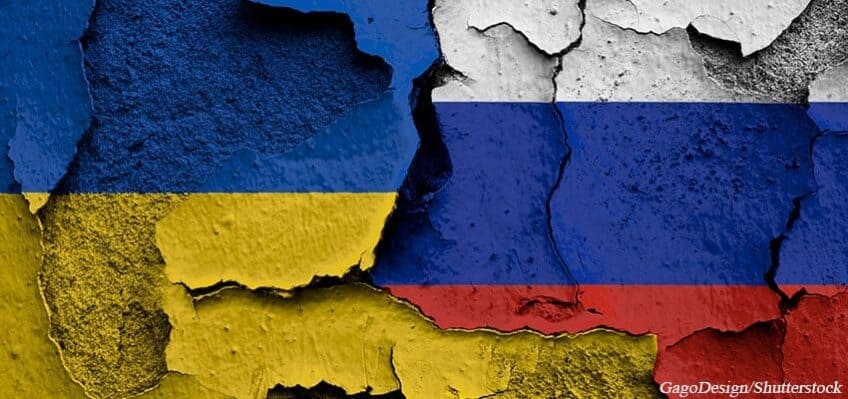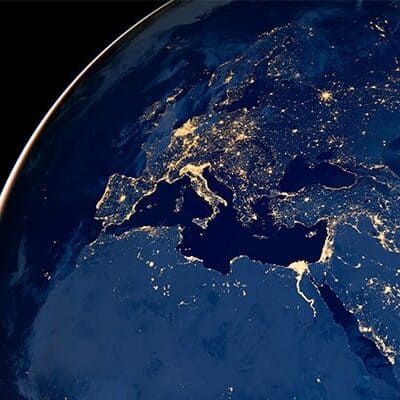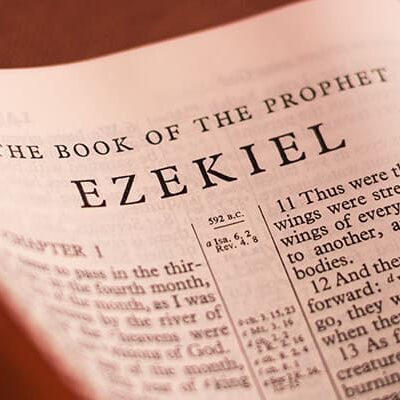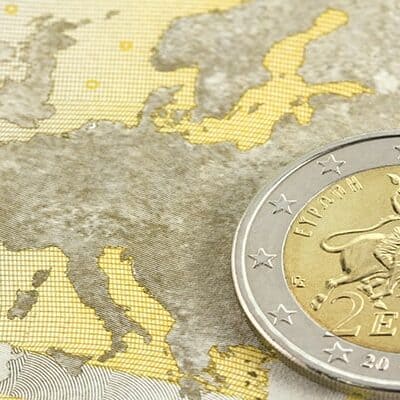In part one we discovered that the peoples of Byelorussia plus many of the fair-skinned people scattered amongst Meschech and Tubal are descendants of Abraham and Keturah through their son Midian. But what of his brother Medan? Which modern nation descends from him?
Medan
Historically, the Medanites dwelt alongside the Mitanni and they formed a kingdom in the Middle East during the tenth and ninth centuries BC. It is for this reason that historians call the Mitanni the “early Medes.” The empire of the Medanites or Medes is often referred to in textbooks as the Amadai-Mada-Medes empire (Mario Cappieri, The Mesopotamians of the Chalcolithic and Bronze Ages, p. 152. NB: Madai, Midian and Medan were closely associated with each other at that time and are still to this day). The Amadai were descendants of Madai who were subject to the Medes, the ruling class of the Empire. Herodotus lists their tribes as the Busae or Buza (that is the natives), Parataceni, Struchates, Arizanti, Budii or Budini and Magi (The Histories, Book 1, Chapter 101).
What was the physical type of the Medes? All historians mention that the earliest tribes of the Medians were an Indo-European ruling class over the Madai according to a range of historians and anthropologists. This Mede ruling class called themselves Arioi or Arii (Herbert Hannay, European And Other Race Origins, p. 200) meaning noble.
The Medes were more numerous and powerful than the Persians who were of the same race but who seem to have been an eastern Median tribe who broke away (Mario Cappieri, The Mesopotamians of the Chalcolithic and Bronze Ages, p. 139). The Persians were first in the central-west areas of Persia then later in the south-west (Arthur Cotterell, The Encyclopedia of Ancient Civilizations, p. 147). From what can be gathered by historians, these Aryan Persians originated in a far away land called Airyanem-Vaejo and came into the Iranian plateau possibly from southern Russia (Clement Huart, Ancient Persia and Iranian Civilization, p. 26). They were basically pastoral and possessed watch-dogs, sheep, oxen and horses and travelled in wagons which had axles and wheels. In general, researchers trace the Indo-Aryans to the Austro-Hungarian plains or to southwest Russia (Edwin Yamauchi, Persia and the Bible, p. 33). One would agree that that is where many of them later migrated to, but their homeland prior to that would have been in the Middle East. Professor Hannay throws further light on the original Persians:
“… The present inhabitants of Persia … succeeded to territories which were abandoned …and to a name imprinted thereon by the … White Race which then disappeared. These incomers, who now go by the name of Farsiyan … are doubtless the descendants of the Non-Persian subject-populations of antiquity, are not racially identical with the Persians who vanished” (Herbert Hannay, European And Other Race Origins, p. 315).
Professor Sayce, writing in his famous The Races of the Old Testament, agrees that the original Persians belonged to the fair-skinned, Nordic division of the White Race: “The physical type of the country-men of Darius and Xerxes, like that of their modern descendants, was Aryan in all of its traits. Travellers still speak of the fair-complexioned, blue-eyed populations met with in the Persian highlands … The Persians were at the outset a Median tribe.” (Archibald Sayce, The Races of the Old Testament, pp. 162-63)
They called themselves Airya (Aryan). Darius the Great on his tomb calls himself “an Arya of Arya(n) descent”. Xerxes called himslf “harri”, meaning “noble” or Aryan. Today Persia is known as Iran or Aryan (NB: this term “Aryan” must not be confused with Hitler’s misappropriation of the term), but these people are not the original Persians or Medes as we have seen. Professor Sayce affirms that the original Persians were a tribe who were originally with the Medes but who broke away from them for a time and had established themselves next to the Elamites (Sayce, ibid, p. 163). He further states that:
“The Medes proper were an Aryan people, who claimed relationship to the Aryans of Northern India and the Aryan populations of Europe, and one of the tribes belonging to them was that of the Persians … But in classical times the older inhabitants of the regions into which the Medes migrated were classed along with them under the general title of ‘Medes’” (Sayce, ibid, pp. 45-46) [emphasis mine].
According to Herodotus, the Persian tribes were: the Pasargadae, Maraphii, Maspii (descendants of Mash?), Panthialaei, Derusiaei (note rus), Germani (certain Hittites), Dai, Mardi (a tribe of Elamites), Dropci and Sagartii (The Histories, Book 1, Chapter 125, Sections 3-4). They called the land which they settled in southern Iran as Parsuash. The same territory is still called Farsistan to this day. Their chief towns were Persepolis (known today as Takht-e Jamshīd) and Parsagarda after which the Hebrews called the Persians “Parsa” (James Douglas (ed), New Bible Dictionary, p. 970); and the Euphrates River “Perath” or “Peres” –– “River of the Persians”. Of course the name originated from a geographical region in southern Iran which was called “Persis”, the Greek form of the old Persian “Parsa.” After the Assyrian Empire collapsed, the Persians annexed Elam. They became closely identified with the Elamites who live today in parts of eastern Europe; the Persian kings even ruled from the Anshan district of Susa in Elam. It seems quite plausible that the true, original Persians, descend from Medan and/or two sons of Midian, Ephah and Epher. These may be the Apharsites mentioned by Ezra (Ezra 4: 9) and whom Bullinger and others reckon as Persians (Ethelbert Bullinger, The Companion Bible, p. 623).
The peoples in Persia today are mixed. The fairest Persians are those living around Persepolis (Takht-e Jamshīd) who are slender, have chestnut hair and are fairer than the surrounding Persians but there are still a few blondes among them (Francis Huxley, Peoples of the World in Colour, p. 127; Vere Childe, The Aryans, p. 160). Also in north-west Iran many blondes persist (Griffith Taylor, Environment, Race and Migration, pp. 186, 214), still have features akin to Europeans (Taylor, ibid, p. 210) and have intermarried with the Semites (Francis Huxley, Peoples of the World in Colour, p. 127) and others.
Where Are the Original
Medes and Persians Today?
When the peoples of Madai migrated to the Ukraine, these Medanites migrated with them and dwelt in close proximity to Madai and Midian as they had in the Middle East in previous centuries in a similar configuration. Pliny refers to these Medanites as the tribe of Medi which during his time dwelt north-west of the Black Sea (The Natural History, Book 4, Chapter 1, Section 2). Of Thrace he writes, “The Medi, who live on the right bank of the river Struna right up to the Bisaltae abovementioned, and the Digerri and the various sections of the Bessi on the left bank, as far as the river Mesto” (Book 4, Chapter 11, Section 40) [emphasis mine].
Herodotus indicates that the Medes were in upper Asia or inner Asia, north of the Caucasian Mountains (The Histories, Book 4, Chapters 1, 12) and Strabo (c64 BC – 23 AD) who lived in Pontus (in northern Turkey) stated that the Maedi were a people of Thrace bordering on the Illyrian Thunatae (i.e., western Ukrainian/Rumanian area) (Geography, Book 7, Chapter 5, Section 7). He also mentions “the Caucasian, or Moschian, Mountains” (Book 11, Chapter 2, Section 1).
Broadly speaking, the Medi dwelt in western Russia near or in eastern Rumania. Lempriere’s A Classical Dictionary also makes reference to them, but as the “Medobythini, a people of Thrace” (p. 365). It should also be noted that a river in the Baltic region was known as the Persante (Henrik Birnbaum, “Indo-Europeans between the Baltic and the Black Sea”, The Journal of Indo-European Studies, Vol. 12, Nos. 3 & 4, p. 238) which may be a direct derivation of Persian.
Peoples, Nations and Cultures, by Professor John Mackenzie explains: “The name of the Belorussians is thought to derive either from their light blond hair, their white folk costumes or from the fact that their land remained unconquered by the Mongols in the 13th century … Before the breakup of the Soviet Union in 1991, the Belorussians had no experience of national independence, having always been under Soviet, Russian, Lithuanian or Polish rule.” (p. 295)
As they migrated into Russia out of the Middle East, their language gradually changed. D’iakonov notes: “The fate of the Iranian dialects is … very vague … in the first millenium B.C.E. the language of the Ukrainian Scythians was still understandable for the ancient Medians” (Igor D’iakonov, “On the Original Home of the Speakers of Indo-European”, Journal of Indo-European Studies, Vol. 13, Nos. 1 & 2, p. 148) [emphasis mine].
Such a revelation. His statement is obviously self-explanatory. We have seen historical reference to the Medi and Medo tribes in the western Ukraine as being descended from the original Medes. One of the tribes of the Medes was Budii according to Herodotus: he refers to the Budini (or Boudini) nation he visited near the Borysthenes or Dnieper River (The Histories, Book 4, Chapter 21, Section 108). They dwelt among the Sauromatai. Soviet historian Vakar writes that the word Budini is a variation of Vudini, Veneti, Venedi or Vendi and that various authorities feel that they may well be the most ancient of Slavic tribes and remote ancestors of the Belorussians (Nicholas Vakar, Belorussia, The Making of a Nation, p. 38).
Today one branch of these Medo-Persian people is known as the Buzhians or Volhynians and they dwell in north-west Ukraine. Physical anthropologists tell us that like the White Russians, they are slightly shorter than the central/eastern Ukrainians (Madai) and have a high percentage of blondes. Overall, their eyes are a light-brown in colour, but many have blue eyes. They are fair-skinned (John Geipel, The Europeans: an Ethnohistorical Survey, p. 230) and like the mixed remnants in Iran, their headform is brachycephalic (Carlton Coon, The Races of Europe, pp. 570-71; Griffith Taylor, Environment, Race and Migration, p. 214) while their closest genetic relatives are the Belorussians (Great Soviet Encyclopedia, Vol. 10, p. 610).
The Volhynians are often included with the Belorussians in historical works. Let us also remember that the original name of the Volhynians was Buzhians (Samuel Cross, The Russian Primary Chronicle, p. 38). One of the tribes of the Medes were the Busae, as we saw previously. Surely, then, the blonde, neo-Nordic Volhynians descend from the Medo-Persians. Another tribe among the Medo-Persians was the Sagartii. In southern Russia anciently dwelt the Saghadu (Herbert Hannay, European And Other Race Origins, p. 310) or Sagetai (Hannay, ibid, p. 311). Various other people in that area were called Persae and Parthi by Roman writers (Hannay, ibid, p. 422). With them were the Dahi tribe, very likely descended from the Dai tribe of Persia.
Another tribe of ancient Persia was the Derusiaei –– could this have been the remnants of the Mitanni? A district of Medo-Persia was named Gedrosia (Michael Grant, Ancient History Atlas. 1700 BC to AD 565, p. 21; Edward Rapson, Ancient India, map between pages 28, 29) and later we find the Gerus or Gerrhus river in Georgia flowing into the Caspian Sea (Lempriere’s, A Classical Dictionary, p. 282). A river with the same name was found in Scythia (Lempriere, ibid). Also, a city of Gerusa once existed in Georgia (Lempriere, ibid) which may be place names left behind during their migrations northwards into the greatness of western Russia.
Outcome of Research
In part one I referred to Russian President Putin and his open ambition to unite the territories of the old Russian Empire and Soviet Union. Especially uniting the nations of Belorussia and Ukraine with Russia itself. Will he succeed? Ethnically take a close look at photographs of himself –– from his youth to the present. What do you see? This author sees a man representing some of the people in western Russian that are a mix of Abrahamic and Meschech stock.
So today, the peoples of Russia are from a number of sons listed under Japheth, but many are also descended from Abraham’s concubine Keturah. The scores of ethnic groups resident in this vast country can be more-or-less categorised into several stocks or nations. Biblically we can be reasonably sure of the following origins of these peoples:
• Great Russians –– Meshech and Tubal
• Belorussians (mainly White Russians) –– Midian (with Medan in the south of the country)
• Ukrainians (Ruthenians) –– Madai (and Medan in the northwest of the country)
• Central Asian – Gog (Edomites and Turkics)
• Far eastern Asians and Eskimos – Magog
• Plus many others
This is all explained in my book In Search of … the Origins of Nations (chapters 8, 12).
Of course the boundaries of these nations do not show a clear racial picture. Instead, there is some overlap and like all nations, demonstrate a model of a cline. Today the majority of the Latvians, Lithuanians, Belorussians and northwest Ukrainians plus some others of their stock scattered across the greatness of Russia, descend from Abraham through Keturah, dwelling among the peoples of Meshech and Tubal.
Finally, the Medes are prophesied to come against end-time Babylon in Jeremiah 51:28, undoubtedly as part of the prophesied eastern forces.
From this research, I conclude that the Belorussians and northwest Ukrainians descend from Abraham’s sons Midian and Medan.









